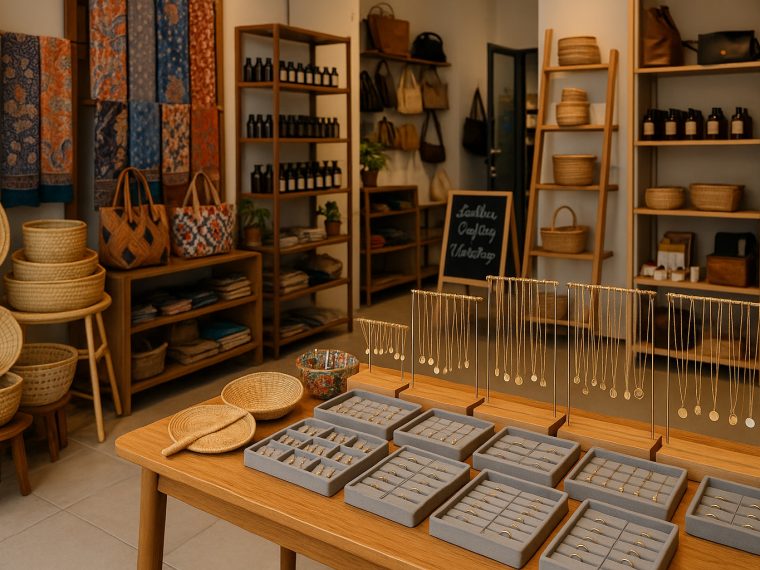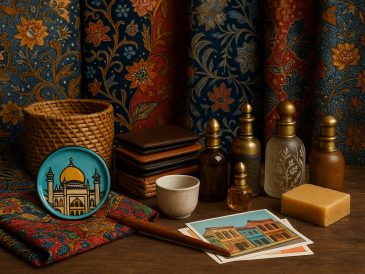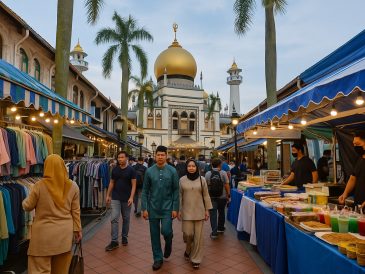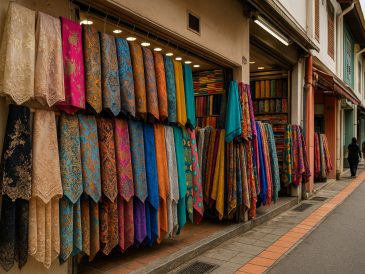Kampong Gelam offers more than cultural landmarks and vibrant food. Behind its historic shophouses and narrow alleys lies a network of artisan shops creating handcrafted items that speak to personal taste and heritage. For anyone seeking handmade jewelry or local crafts, this district rewards those who pay attention to detail.
Haji Lane: Where Independent Design Thrives
Haji Lane stands at the core of the artisan movement in Kampong Gelam. With its colorful murals and indie vibe, this narrow stretch hosts some of the most distinct retail spaces in Singapore.
Jewelry Shops to Visit:
- SSFW (75 Haji Lane)
Founded in 2007, SSFW focuses on semi-precious jewelry. The shop features a charm necklace bar that lets customers build their own accessory. Every piece reflects an eye for craftsmanship and customization. - XCXII (61 Haji Lane)
Known for tarnish-free and waterproof pieces, XCXII caters to modern styles with a functional twist. Its charm bar adds a layer of personal flair, letting customers combine materials and symbols that suit their aesthetic. - Hygge
A lesser-known gem tucked in a nearby lane, Hygge mixes cozy décor with thoughtful merchandise. Alongside home goods and stationery, visitors will find handmade jewelry curated for character over mass appeal.
Curbside Crafters: A Permanent Artisan Marketplace
Located at 730 North Bridge Road, Curbside Crafters operates as a physical platform for local creatives. Instead of cycling through random craft markets, artisans here have a consistent space to display work that spans:
- Minimalist jewelry
- Hand-sewn fashion items
- Recycled-material accessories
- Personalized gifts
The venue rotates pop-ups and short-term vendors, offering fresh designs without the need for predictable mass production.
Traditional Crafts Beyond the Boutiques
Kampong Gelam honors its heritage through trades that have endured time. Walk through Arab Street, Bussorah Street, and Kandahar Street to see living traditions maintained through practice rather than nostalgia.
Batik and Textiles on Arab Street
Shops along Arab Street carry a legacy of fabric and dye. One technique stands out: batik, where wax-resist methods bring layers of color to cloth. Some highlights:
- Kiah’s Gallery
This boutique doubles as a batik gallery. Visitors can commission custom-made fabric or browse ready-to-wear pieces that feature heritage motifs and organic dyes. - Textile Stores Nearby
Many other storefronts sell raw fabrics, laces, and embroidered materials by the meter. Whether for home use or tailoring, Arab Street offers breadth in selection and colorways.
Custom Perfumes on Bussorah Street
For a scent-based souvenir, two perfumeries stand out:
- Jamal Kazura Aromatics
With roots dating back decades, this perfumery lets customers blend their own oil-based fragrances using traditional attar-making techniques. - Sifr Aromatics
A modern approach to artisanal perfumery, yet grounded in heritage. Sifr bottles every order by hand and allows walk-ins to work with their in-house scent designer.
These perfumes are free of alcohol and last long on skin, offering something more intimate than a store-bought spray.
Rattan and Basketry
Rattan weaving is still alive through family-owned shops such as:
- Habib Crafts
- Rishi Handicrafts
Both carry a mix of:
- Hand-woven baskets
- Rattan bags
- Decorative trays
- Hanging planters
The weave patterns show generational knowledge passed down by hand. These aren’t factory molds but natural materials shaped with years of repetition and care.
Leather Crafting Workshops: Make It Yourself
Crafune, located on Haji Lane, offers hands-on workshops for those who want to make something from scratch. The sessions cover:
- Basic leather cutting and stitching
- Crafting wallets, cardholders, and keychains
- Personalizing through initials or color selection
Workshops typically last a few hours and require no previous experience. By the end, participants walk away with a self-made product using quality materials.
Interactive Learning Through Heritage
The Malay Heritage Centre offers a digital experience for younger visitors with its game “I am a Little Jewellery Designer.” Inspired by Kampong Gelam’s past as a diamond hub, the interactive module teaches children the history of jewelry-making in the area through a playful format. Though online, it roots itself in real events and local trades.
Tips for Finding Hidden Artisan Shops
To make the most of a visit to Kampong Gelam’s craft scene:
- Walk, Don’t Rush
Many shops are tucked away in side alleys or above ground level. Quick visits miss the layered details. - Check for Pop-Ups
Spaces like Curbside Crafters change weekly. Some of the best pieces come from temporary booths run by new makers. - Ask Shopkeepers
Many artisans know each other. Ask for recommendations, and they might direct you to nearby studios or new arrivals. - Inspect the Craft
Quality handmade goods reveal themselves in construction. Look at stitch consistency, material aging, and finish before you buy.
Why Kampong Gelam Crafts Matter
The appeal isn’t just in the product but in the process. Every item reflects hours of labor, design thought, and cultural influence. Whether it’s a beaded bracelet from SSFW or a woven tray from Rishi Handicrafts, the outcome carries local identity and creative voice.
Mass production lacks this signature. In Kampong Gelam, shoppers support creators who remain hands-on in their art. The materials carry stories. The designs resist repetition. The district becomes a map of people shaping objects that matter.
Handmade doesn’t mean old-fashioned. It means slower, better, and more thoughtful. In Kampong Gelam, that story continues through every clasp, stitch, scent, and weave.




